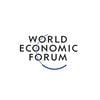WEF: How business travel is reinventing carbon pricing by embedding economic theory
- Business travellers represent 75% of profits on certain flights, putting it in a strong position to help accelerate the transition towards sustainable aviation fuel.
- Whether your company is advanced or in the preliminary stages of its carbon pricing journey, business travel is an easy place to start.
- By embedding the cost of carbon into business travel, investment in low-carbon tech like SAF can become more attainable for any business.
In an era where we need our sustainability efforts to make a real, tangible impact, carbon pricing is overdue for an overhaul. Organizations can integrate carbon pricing into their business strategy to make economic growth compatible with climate action.
Have you read?
- Survey of travellers finds 76% want more sustainable options
- Tourism is bouncing back - but can we make travel sustainable?
- 4 ways the public and private sectors can change the future of sustainable travel together
Carbon pricing is a widely used tool to help corporates accelerate their company’s decarbonization journey. It incentivizes emitting less by placing a fee on emissions. But putting a price on carbon is only half the equation. Coupling carbon pricing with decarbonization is how the world can achieve net zero.
According to the World Bank, 24% of global emissions are now covered by some form of carbon pricing with revenues exceeding $100 billion. Money is fungible, but funds must be channeled into sustainability to effectively help address the source of these emissions, as well as their climate impact. As former Director of the White House National Economic Council Brian Deese noted: “As useful as it can be to make carbon pollution more expensive by putting a price on it, the most credible way to accelerate the adoption of zero-carbon technologies is to make that technology cheap and widely available.”
This is exactly what the business travel community is doing to help accelerate the decarbonization of aviation.
Carbon pricing for business travel
In the case of business travel, carbon pricing puts a price on the emissions associated with flying. This fee can then get invested back into low-carbon technologies for more sustainable business travel.
Whether your company is in the advanced or preliminary stages of its carbon pricing journey, business travel is an easy place to start. At Amex GBT, for example, we are helping businesses calculate and apply a carbon fee to air travel, then invest the funds generated into decarbonization projects such as sustainable aviation fuel (SAF). Addressing the problem by simultaneously investing in solutions is how the industry can drive toward net zero.
How embedding carbon pricing into business travel works:
- Apply a fee to air transactions. These fees can be a flat fee (e.g. $10 per flight), a categorical fee based on distance or class, or an emission-based fee that aligns with a company’s preferred carbon calculation methodology.
- The fund then scales in line with the environmental impact of a company's business travel.
- Funds can be invested into initiatives that can help decarbonize the business travel programme such as SAF, electric vehicles (EVs), research & development (R&D) and more.
There are several companies doing carbon pricing today via their business travel function. For example, Sanofi, Swiss Re, Microsoft, Bank of America, McKinsey, KPMG and Zurich, to name a few.
“Emissions-based carbon pricing enables us to combine economics, sustainability and technology to strengthen our business travel programme and boost funding to invest in decarbonization initiatives such as SAF,” said Lucian Alexandru, Global Procurement Category Head, Sanofi. “With support from Amex GBT, we are closely aligning our business travel programme with company-wide efforts to reduce emissions, while also helping accelerate and prepare for a low-carbon future.”
Any company can do this. Global multinationals are leading the way in carbon pricing adoption. However, for small and medium-sized enterprises (SMEs), carbon pricing could prove even more valuable in that it can help a company build a sustainability budget where one does not exist. Travel is imperative for growth, especially for SMEs. Instead of weighing sustainability against the rising cost of doing business and competing budget priorities, SMEs can use carbon pricing via business travel to create a self-sustaining fund for sustainability as they grow.
Using business travel to implement carbon pricing could help unlock the private capital needed to decarbonize aviation at the speed and scale required to hit industry net-zero targets. By embedding the cost of carbon into business travel, investment in low-carbon technologies like SAF can become more attainable for any business – regardless of size or sector. In turn, this can help bring down the price of low-carbon technologies and help make them more widely available for all.
The World Economic Forum communities, Clean Skies for Tomorrow and First Movers Coalition, have grand SAF targets for 2030. Davos 2025 – the halfway point – represents a moment of reckoning. A goal without a plan is just a dream. Carbon pricing can be the forcing function to make these goals a reality.
